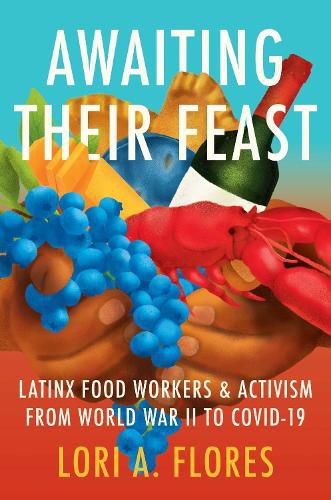Readings Newsletter
Become a Readings Member to make your shopping experience even easier.
Sign in or sign up for free!
You’re not far away from qualifying for FREE standard shipping within Australia
You’ve qualified for FREE standard shipping within Australia
The cart is loading…






Though Latinx foodways are eagerly embraced and consumed by people across the United States, the nation exhibits a much more fraught relationship with Latinx people, including the largely underpaid and immigrant workers who harvest, process, cook, and sell this desirable food. Lori A. Flores traces how our dual appetite for Latinx food and Latinx food labor has evolved from the World War II era to the COVID-19 pandemic, using the US Northeast as an unexpected microcosm of this national history.
Spanning the experiences of food workers with roots in Mexico, Puerto Rico, Cuba, the Dominican Republic, Haiti, and Central America, Flores's narrative travels from New Jersey to Maine and examines different links in the food chain, from farming to restaurants to seafood processing to the deliverista rights movement. What unites this eclectic material is Flores's contention that as our appetite for Latinx food has grown exponentially, the visibility of Latinx food workers has demonstrably decreased. This precariat is anything but passive, however, and has historically fought-and is still fighting-against low wages and exploitation, medical neglect, criminalization, and deeply ironic food insecurity.
$9.00 standard shipping within Australia
FREE standard shipping within Australia for orders over $100.00
Express & International shipping calculated at checkout
Though Latinx foodways are eagerly embraced and consumed by people across the United States, the nation exhibits a much more fraught relationship with Latinx people, including the largely underpaid and immigrant workers who harvest, process, cook, and sell this desirable food. Lori A. Flores traces how our dual appetite for Latinx food and Latinx food labor has evolved from the World War II era to the COVID-19 pandemic, using the US Northeast as an unexpected microcosm of this national history.
Spanning the experiences of food workers with roots in Mexico, Puerto Rico, Cuba, the Dominican Republic, Haiti, and Central America, Flores's narrative travels from New Jersey to Maine and examines different links in the food chain, from farming to restaurants to seafood processing to the deliverista rights movement. What unites this eclectic material is Flores's contention that as our appetite for Latinx food has grown exponentially, the visibility of Latinx food workers has demonstrably decreased. This precariat is anything but passive, however, and has historically fought-and is still fighting-against low wages and exploitation, medical neglect, criminalization, and deeply ironic food insecurity.